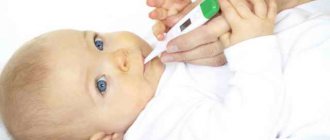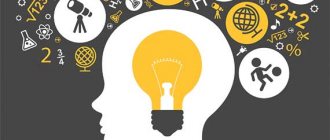Parents who suspect that their child has cerebral palsy would like the diagnostic process to be quick, but this is not the case. Diagnosing cerebral palsy is a complex, multi-step process of examinations, assessments and tests. Understanding the diagnostic process will help parents navigate this difficult time.
The process of diagnosing cerebral palsy includes monitoring the child's development. If the child was born prematurely or with low body weight, he is placed in the neonatal intensive care unit, where he is monitored by doctors. The child is also examined monthly in the clinic by a pediatrician, who can determine the first signs of cerebral palsy. In some cases, parents notice the first signs of the disease and come for a consultation with a specialist.
Parents become upset when they realize that the diagnostic process is very long and painstaking. However, these studies are necessary in order to understand everything about the child's condition.
12 steps to diagnose cerebral palsy:
- Step 1: Parent Observations
- Step 2: Clinical observations
- Step 3: Motor Function Analysis
- Step 4: Medical History
- Step 5: Documentation of concomitant diseases, selection of conditions and technical means that reduce the development of complications
- Step 6: Receive Test Results
- Step 7: Diagnosis
- Step 8: Confirm the diagnosis
- Step 9: Determine the Cause
- Step 10: Selecting a child management team
- Step 11: Making a plan for managing the child
- Step 12: Formation of a life plan for a child with cerebral palsy
These steps are detailed below.
Causes
Why are children born with cerebral palsy? There may be several reasons, including:
- Antennal (at the stage of intrauterine development).
- Postnatal (after birth).
If we are talking about the postnatal period, then children with cerebral palsy acquired at this stage are less common than those for whom this disease is congenital.
Factors provoking the development of infantile paralysis:
- genetics (which is why, in order to understand the likelihood of having a sick child, it is important to conduct genetic analysis and heredity analysis before conception or in the early stages of pregnancy in order to give birth to a healthy baby);
- lack of oxygen (with regular hypoxia during pregnancy, the brain does not receive enough oxygen, which leads to the formation of the disease);
- infections (arachnoiditis, meningitis, encephalitis, etc.);
- toxic poisoning (can occur as a result of taking potent drugs or poisoning with heavy metals, as well as in a mother leading an unhealthy lifestyle);
- electromagnetic irradiation;
- birth injuries;
- prematurity (a child born prematurely risks acquiring this disease several times more than one whose birth occurred at term).
Despite the fact that the disease does not progress, serious consequences can develop when proper treatment is absent for a long time.
BASIC METHODS OF REHABILITATION OF CHILDREN at the Vremena Goda clinic
The basis of our approach is INTENSIVE PHYSICAL REHABILITATION, based on modern evidence-based medicine. A team of specialists in various fields of medicine creates an individual complex of rehabilitation treatment for each patient. In each complex, in addition to physical rehabilitation methods, there is psychocorrection, speech therapy assistance, occupational therapy, control and treatment of concomitant diseases. For school-age children, educational programs of general education and special profiles are additionally provided. Much attention is paid to special nutrition and organizing an optimal regime of exercise and rest. The ultimate goal of treatment is not only the maximum possible restoration of the functions of movement and self-care, but also the active socialization of the child.
Physical rehabilitation technologies developed in our clinic, using the achievements of modern evidence-based medicine in this area, as well as Voight’s principles of reflex locomotion - the formation (restoration) of motor skills using innate motor reflexes, Bobath concepts - technologies for combating spasticity and restoring voluntary movements.
The technology of physical rehabilitation is the sequence and content of therapeutic measures aimed at restoring voluntary movements, in a volume sufficient to remain in an upright position, walking, and motor activity associated with household self-care.
Typically, the basic complex includes a wide range of physical methods of influence - active and passive physical exercises - kinesitherapy in the gym and in the water, using various simulators and special devices.
Physiotherapy (various methods of electrical, magnetic, ultrasonic, temperature and mechanical effects), massage, balneotherapy (mud applications), special relaxation technologies, etc.
The main methods of physical rehabilitation are structured in our clinic in such a way that they influence the control of movement of the body as a whole and its components:
- Purposeful individual movements of body parts
- Cooperative movements of various parts of the body - dynamic stereotypes (in particular, movements of the limbs when crawling on the stomach, walking on all fours, walking in an upright position, etc.)
Control of vertical posture and movement of the body in space - contain elementary components of movement - straightening the body against gravity and simple purposeful movements, which, through training using special techniques, form friendly movements - dynamic stereotypes that allow the function of movement and self-service.
Basic dynamic stereotypes (conditioned reflexes) necessary for movement and self-care require quite a lot of time to recover (usually at least 4-8 months). Control of posture and movement, activated during kinesitherapy, is one of the most important components of restoration (learning) to stay in an upright position, walking, and other movement patterns that form the basis of basic physical activity and self-care.
Restoring balance control and basic physical activity can be achieved in almost all cases in patients with cerebral palsy while maintaining basic intellectual functions.
Exercises on a walking simulator (beginning of the treatment complex)
Same thing after 4 weeks
Over 6 months
In children under 1 year of age, if the disease is present, weak attempts to lift the head or turn it are noted. This phenomenon persists at the age of 6 months. In addition, an infant six-month-old baby can demonstrate the presence of the disease as follows:
- when reaching out, when someone wants to pick him up, he pulls only one limb, while the other is tightly clenched into a fist;
- the threat remains if the baby still has problems eating (the same symptoms as at three months; the baby has difficulty sucking the breast and swallowing milk);
- the baby does not show emotions (there is no smile, although at this age there should already be one, the baby does not frown);
- there are developmental delays (by six months the child should already be able to roll over on his own, while a baby with cerebral palsy does not want to do this).
Methods of osteopathy in the diagnosis and treatment of cerebral palsy in newborns
Unlike neurological methods, osteopathy uses exclusively manual techniques and techniques to diagnose and treat diseases. The osteopathic doctor uses his fingers to identify blocked and damaged areas of the head and body.
Osteopathic treatment for cerebral palsy allows for the correction of various disorders in the early stages of the disease: from joint dysplasia to displacement of the skull bones and hydrocephalus. You should contact an osteopath immediately after the birth of a child, even if the parents have no reason to suspect cerebral palsy, in the following cases:
- During pregnancy, the woman suffered from an infectious disease;
- The pregnancy proceeded with complications and suspected hypoxia;
- Prolonged or complicated labor using instrumental methods for obstetrics (forceps, plungers).
The cause of cerebral palsy is most often organic damage to the brain, birth trauma and microtrauma of the cranial bones. A consultation and course of treatment with an osteopath in the first 3 months of life will help get rid of cerebral palsy or significantly improve the child’s health and quality of life in the future.
Classification of forms of cerebral palsy
Depending on the main cause of cerebral palsy and the location of the brain tissue disorder, several forms of the disease are distinguished based on a number of signs:
- Spastic diplegia is the most common and common form of cerebral palsy. With this type of disease, there is bilateral impairment of muscle function, with the legs, arms and face to a lesser extent being more affected. This form is characterized by skeletal deformities and pathological changes in the joints. Spastic diplegia most often results from the birth of a child with significant prematurity. The disease is often accompanied by a sharp decrease in the motor function of all four limbs, sometimes with partial or complete paralysis (tetraplegia). Against the background of pathology of the cranial nerves, disturbances in speech, auditory and visual functions may develop. With this form of cerebral palsy, if there are no serious impairments in intellectual development and significant impairments in the motor function of the hands, children have the highest chance of social adaptation and self-care.
- Double hemiplegia is one of the most complex and severe forms of cerebral palsy; its development is most often caused by chronic fetal hypoxia during gestation or early infancy (birth trauma). With this form, disorders such as spastic paralysis of all limbs, severe deformities of the torso, and stiffness of the joints develop, which begin to appear at a very early age. Against the background of motor dysfunctions, in approximately half of the diagnosed cases there are serious mental development disorders - cognitive (poor memory, lack of ability to cognition, lack of ability to understand the surrounding world), speech, visual, auditory disorders, pathological changes in the facial muscles, weak swallowing, sucking, chewing reflexes. Often children with this form of the disease suffer from epilepsy. The prognosis for such patients is disappointing; pathologies of motor functions in combination with impaired mental development lead to an inability to self-care.
- The hyperkinetic form is most often caused by hemolytic disease of the newborn, which is caused by an immunological conflict regarding the Rh factor or blood group of the mother and child. In severe forms of the disease, the newborn becomes intoxicated with antibodies from the mother's blood directed against the child's red blood cells. The disease is characterized by excessive motor reactions of muscles, which are caused by impaired muscle tone. Skeletal deformities in this form of the disease are absent or mild. Children experience various types of hyperkinesis - involuntary movements from slow worm-like to fast intermittent, spasms of the facial muscles, cramps of the limbs. Muscle tone can be variable from lethargy and weakness at rest to hypertonicity when moving. Often, with this form of cerebral palsy, hearing impairment and pathologies of motor function of the eyes are observed. Intellectually, such children can develop within normal limits; only the verbal function of communication is impaired with severe dysarthria (impaired pronunciation, speech breathing, articulation, tempo-rhythmic organization of speech).
- The atonic-astatic form is most often a consequence of birth trauma, chronic hypoxia and fetal development abnormalities during pregnancy. In most cases, this form of the disease is caused by damage to the tissue of the cerebellum, sometimes to the cerebral cortex in the frontal region. Children with this form of cerebral palsy are characterized by symptoms such as very low muscle tone, inconsistency of movements, poor coordination, and poor ability to maintain balance when walking. Sometimes speech disorders and intellectual pathologies of varying severity are also observed - from mental retardation to severe forms of mental retardation.
- The hemiplegic form is caused by a hematoma or hemorrhage with damage to one of the hemispheres of the brain, against which unilateral damage to the limbs develops. Hemiparesis (muscle weakening or partial paralysis) of the limbs of the right or left side may be accompanied by spasms and convulsions. In most cases, the motor function of the hand is more impaired. Depending on the degree of damage to the cerebral hemisphere, pathologies of speech function and mental retardation may also be observed.
Diagnostics
It is impossible to detect the presence of the disease by observing the baby; one can only assume that not everything is all right with him. The disease must be detected in a specialized clinic. And here it is extremely important to go there as soon as possible in order to make a correct diagnosis and begin immediate treatment.
Diagnosing cerebral palsy allows you not only to identify the problem, but also to understand which specific part of the brain is affected.
Comprehensive diagnostics includes:
- neurological examination (the doctor uses a variety of neurological tests to determine the presence or absence of reflexes);
- ultrasound examination of the brain (ultrasound) (prescribed if there is a suspicion of an illness);
- electroencephalogram (performed if seizures are present among the symptoms);
- magnetic resonance imaging (MRI) and computed tomography (CT).
It is important that the diagnosis be carried out by an experienced neurologist, since the initial diagnosis of cerebral palsy is not made at all (encephalopathy is a prerequisite for the development of paralysis). But there is a possibility of confusing encephalopathy with banal muscle tone; in such a situation, either the parents will receive incorrect information and the child will not begin to receive proper treatment, or the opposite will happen, when the child is unreasonably prescribed treatment for a disease that he does not have.
Examination by a specialist
General information
Modern neurology has many unpleasant and dangerous ailments, but the most unpredictable of them is cerebral palsy (the disease should not be confused with Down syndrome). The characteristics of this disease indicate that this disease is not a separate ailment, but a whole complex of neurological disorders that include several parts of the brain and, accordingly, can cause a large number of symptoms, including:
- decreased muscle activity;
- lack of coordination;
- problems with movement;
- speech and hearing disorders;
- decreased intellectual development.
The fact that the disease belongs to the non-progressive group indicates the need for its correction and treatment.
The danger of premature birth
The number of premature newborns is growing, and medicine has learned to care for them at extremely early stages. However, such babies are very vulnerable in terms of further development. The increase in the average age of expectant mothers and the development of assisted reproductive technologies have led to the fact that more and more often children are born before the time allotted by nature.
The development of motor skills in children depends on the work of the parts of the brain that are responsible for correct posture, posture, and coordination of movements. A baby born prematurely begins to move independently only after its musculoskeletal system has formed. And since he did not develop enough time in the womb, he needs to be provided with comprehensive care, which includes not only drug treatment, but also rehabilitation of the motor system.
Why am I able to restore children?
Let's look at the condition of the back muscles of a five-month-old very premature baby who died due to a cerebral hemorrhage immediately after birth. The pictures were taken with an electron microscope.
You see swelling in the muscle cells and a displacement of the nuclei from the center of the cells to the periphery. Explanation for the image:
- Muscle fibers are shown in red.
- The yellow flower showed swelling.
- Dark – cell nuclei.
Swelling in the back muscles caused pain in the embryo. When the pain became unbearable, the child stood up from the fetal position on his legs and, pushing off from the wall of the uterus, began to be born on his own.
Doctor Nikonov
Let's look at why premature babies develop bronchopulmonary dysplasia, bronchitis, and apnea (stopping breathing) .
Due to the presence of swelling in the intercostal muscles, the child’s chest cannot fully expand when inhaling. Therefore, the alveoli that make up the lungs are not completely filled with air and can stick together at any time. To prevent the child from dying from suffocation, he is connected to an artificial respiration apparatus.
Treatment
Recovery of a newborn with cerebral palsy is completely impossible, however, with regular and correct treatment, certain results can be achieved. The child will be able to communicate normally with his peers, attend a regular school, and only isolated muscle manifestations will remind him of the presence of the disease.
It is necessary to treat the disease comprehensively, using the maximum possible arsenal prescribed by the doctor.
So, treatment includes:
- drug intervention (taking pills is inevitable, since the nervous system suffers, which needs to be nourished from the outside in case of such a disease);
- massage (performed by an experienced specialist, and, unfortunately, this is not a temporary, but a permanent measure);
- Exercise therapy for cerebral palsy (a permanent procedure that will need to be carried out);
- surgery (performed only if indicated);
- non-standard techniques (plastering, kinesiotherapy, hippotherapy, dolphin therapy, music therapy, etc.).
It is important to understand that all prescribed procedures must be performed strictly in accordance with the doctor’s recommendation, otherwise you may harm the patient.
By the way, in especially severe cases, treatment should take place in a hospital.










